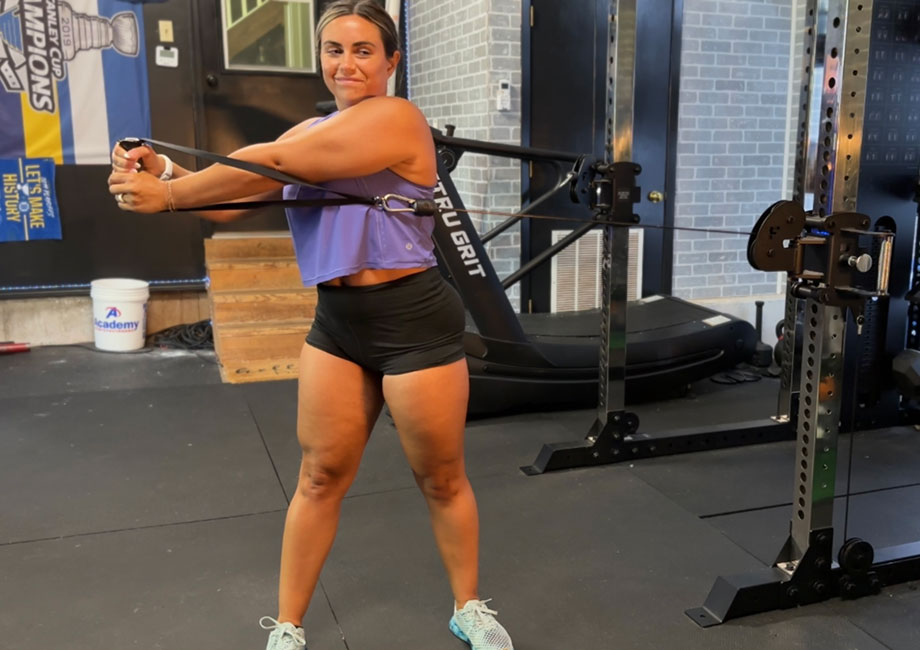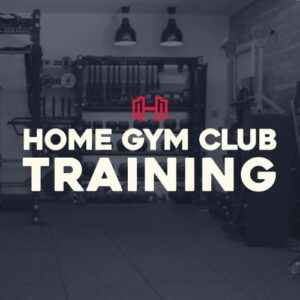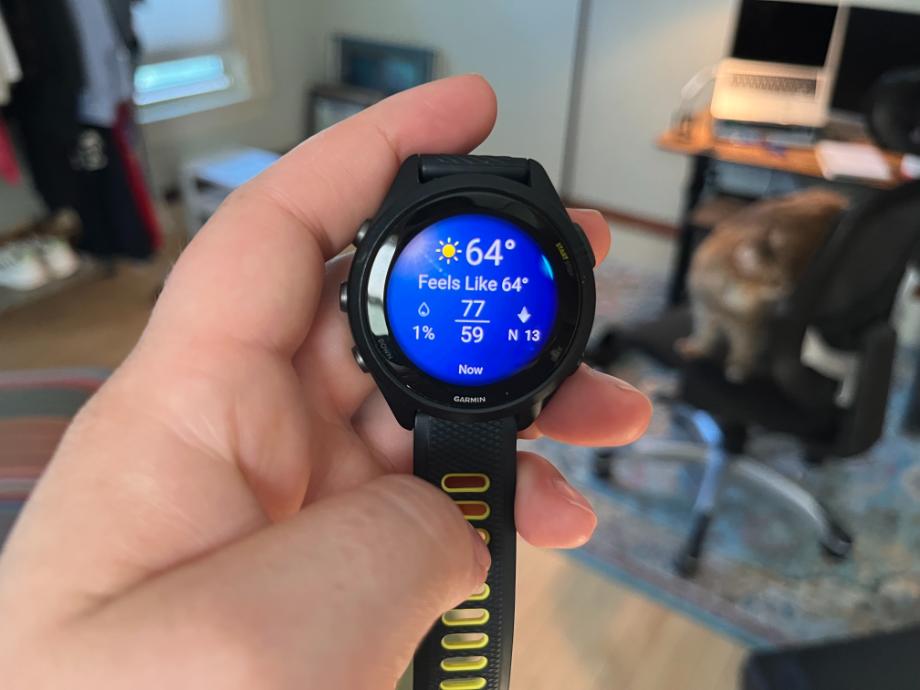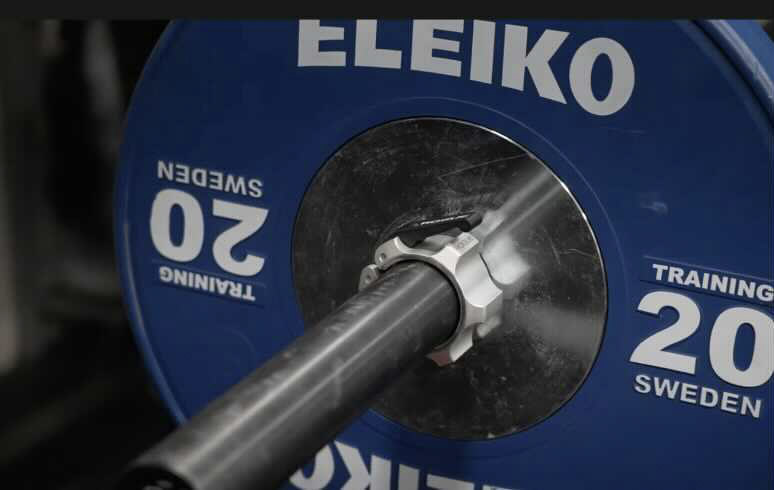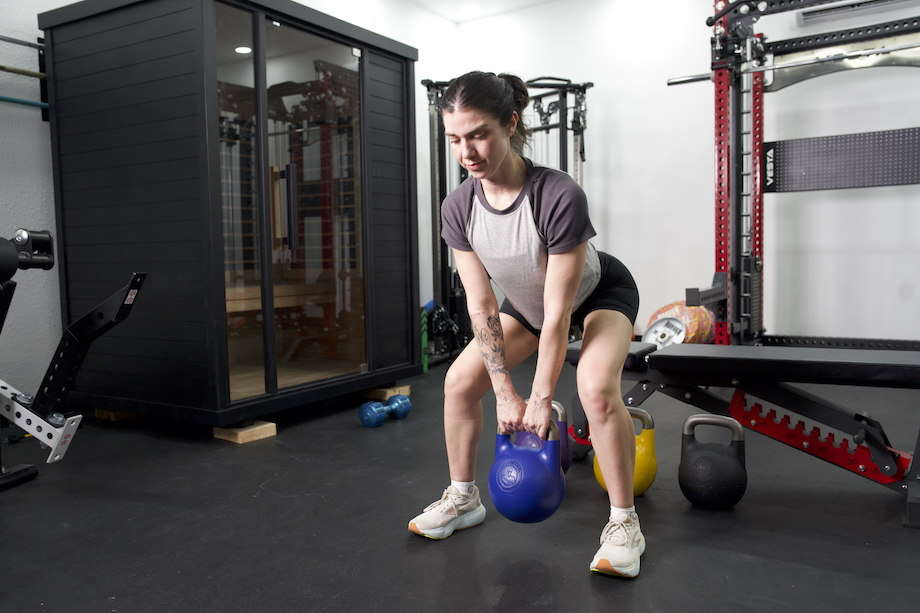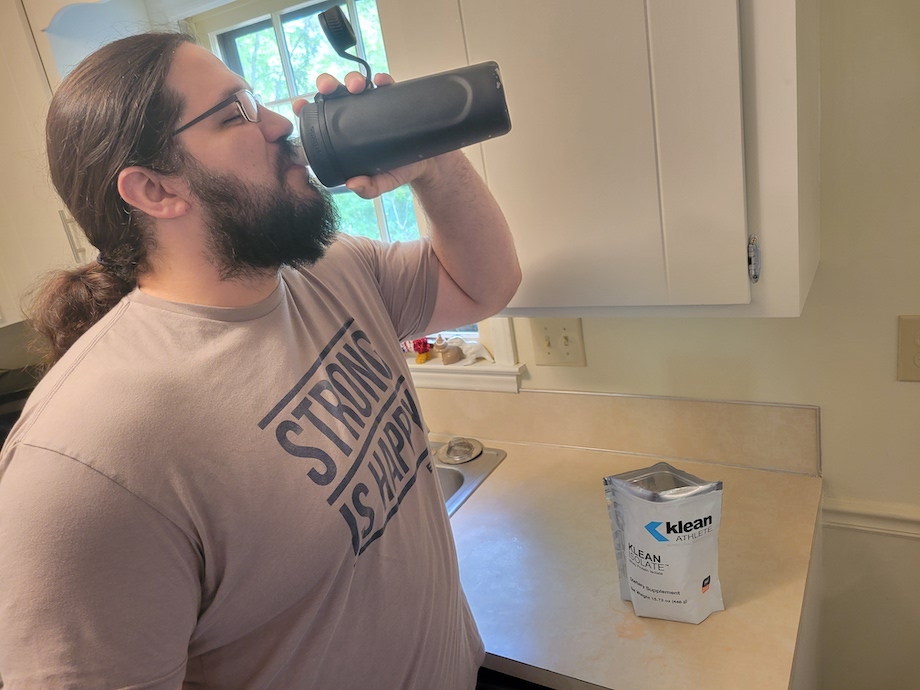Floor exercises and free weights are common components of any solid core workout, but have you considered incorporating cable exercises?
“Cable machines make an excellent addition to any strength training workout,” says Amanda Capritto, a certified personal trainer (CPT), CrossFit and functional training specialist, and GGR Senior Staff Writer. “They provide constant tension throughout the full range of motion, are extremely versatile, and take up way less space than free weights!”
Cable machine exercises are also convenient and effective. According to a 2017 study published in the Journal of Strength and Conditioning Research1, the cable machine has an edge over traditional selectorized weight training, specifically regarding muscle activation and kinematics.
So, if you’ve been working to build a strong core, check out our killer cable ab workouts!
RELATED: The Best Cable Machines For Home Gyms
Anatomy of the Abdominal Muscles
We need to understand a little bit about the anatomy of our abdominal muscles2 if we’re going to effectively put together the best cable machine ab workout.
The muscle most of us picture when talking about our abs is the rectus abdominis, the one most prominently featured if you have “six-pack abs.” It sits smack dab in the middle of the abdomen between the base of the sternum and the pelvis.
RELATED: Upper Ab Workouts
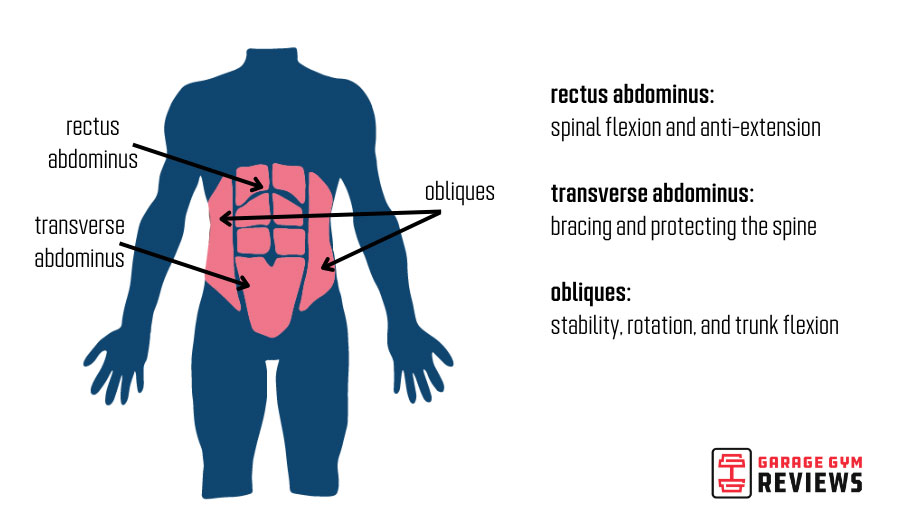
The transverse abdominis is also located in this region, seated beneath the rectus abdominis. This deep muscle protects your internal organs and stabilizes your spine, especially when lifting or carrying heavy loads during exercise, weightlifting, and everyday life.
Venture away from the midline in either direction, and you’ll encounter the external obliques, the most superficial core muscles. These muscles work in conjunction with the deeper and similarly-situated internal obliques to assist in trunk rotation, stabilize the spine, and enable side bends.
RELATED: Best Core Exercise Equipment
How to Work Abs With a Cable Machine
Beginners often find the sight of the cable machine daunting, but this massive apparatus works wonders for chiseling our midsections and inspiring muscle growth in our abdomens.
“To work out our ab muscles using a cable machine,” says Amanda, “we’re going to employ many of the same movement patterns that we use during bodyweight ab exercises. The only difference is that now we’re holding a handle or attachment to work in some resistance.”
Let’s use the standard crunch exercise as an example. Regular body weight crunches involve lying on your back and flexing your torso forward to contract the abdominal muscles. Similarly, the standing cable crunch involves flexing the torso forward to contract the abdominal muscles, but we are now fighting against the added resistance from the cable machine.
So, we’ve taken a familiar movement pattern and used added resistance, thanks to the cable machine, to make each rep more impactful. We’re now performing more work in less time.
RELATED: Functional Core Exercises
“When first starting out, make sure you go light,” says Amanda. “You might be capable of big sets of regular crunches and sit-ups, but that doesn’t mean you’ll be able to do the same when you add resistance. Start light and scale up gradually as you progress.”
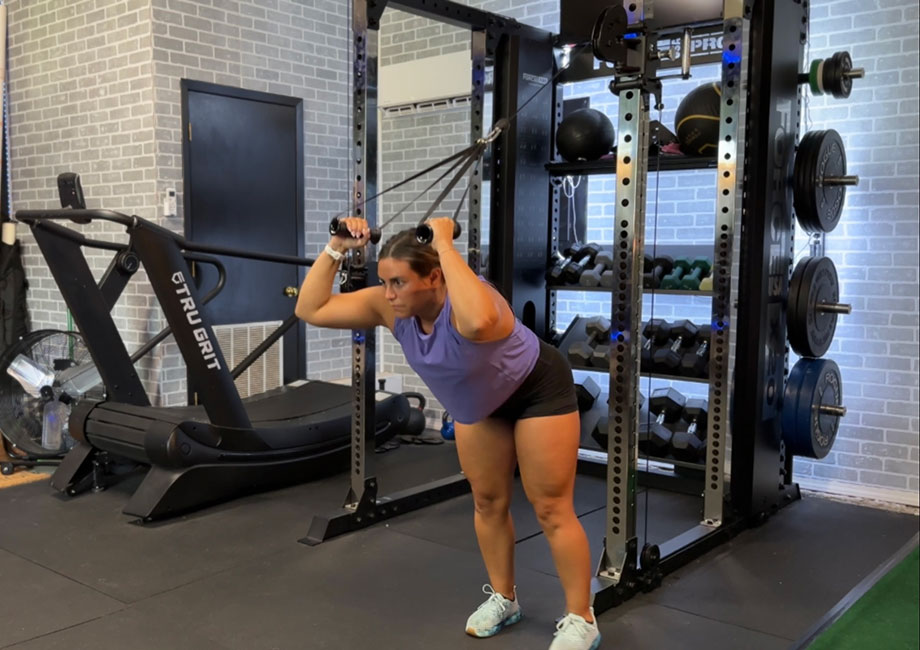
Why Cable Machines Are Great for Ab Workouts
Adding resistance to the movement is the biggest perk to incorporating cable machines into your ab workouts because this enables progressive overload. Progressive overload isn’t possible without some method of added resistance, so you’ll need it to unlock strength gains associated with overloading.
RELATED: What is Progressive Overload?
You could still accomplish these results with free weights, like barbells, dumbbells, and kettlebells, but there are some downsides present here, which aren’t a problem when using cable machines.
“Free weights can be bulky and cumbersome, restricting your movement,” says Amanda. “You want something that encourages a full range of motion to perform the most possible work during each rep, and that’s exactly what the cable machine provides.”
That’s not all; cable machines also create constant tension, meaning you’ll have to keep the targeted muscles contracted throughout the entire exercise to complete the movement. Free weights don’t necessarily function this way.
To summarize, cable machines are effective, convenient, and versatile, making them a no-brainer pick for anyone looking to supercharge their ab workouts.
Best Cable Ab Exercises
Now that we understand the science behind training your core with cables: let’s talk about some of the best cable exercises to add to your ab workout, including step-by-step instructions and what makes each great!
Kneeling Cable Crunch
Why we like it: “The kneeling cable crunch converts a classic bodyweight crunch into a weighted exercise,” says Amanda. “Performing it from the kneeling position eliminates any balance challenge too, meaning you can really isolate your core muscles.”
How to do it:
- Set the pulley to the highest point and fasten the rope attachment. Grip the attachment with both hands, holding it behind your head, and get on your knees while facing the weight stack.
- Crunch forward, pulling the rope toward the floor in front of your head.
- Hold briefly, then slowly return to the starting position.
RELATED: Isolation Exercises
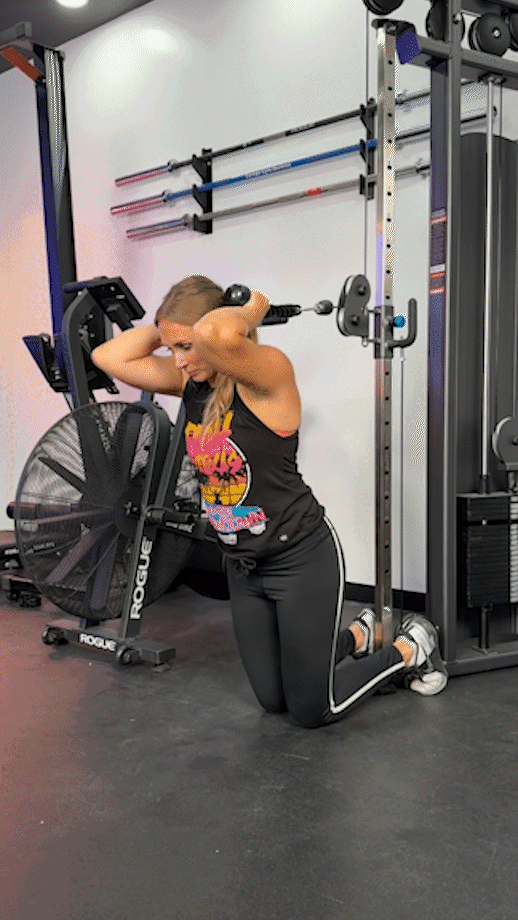
Seated Cable Crunch
Why we like it: Seated cable crunches can offer a wider range of motion than the kneeling version. The seated position also adds a balance challenge, since the cable machine will work to pull you out of your seat.
How to do it:
- Place a flat weight bench in front of the cable machine, set the cable pulley height to high, and secure the rope attachment. Grab on with both hands, holding the rope behind your head, and sit down facing away from the machine.
- Bring your head towards your thighs to crunch forward.
- Hold briefly, then slowly return to the starting position.
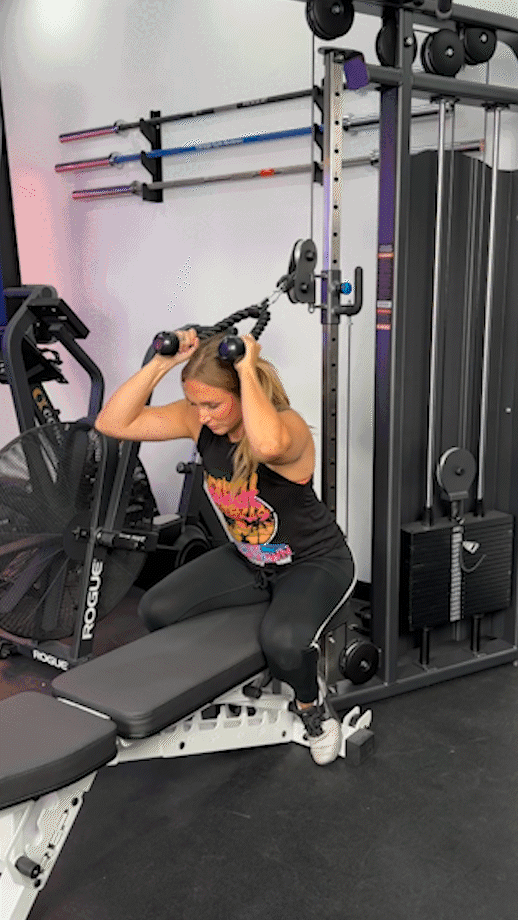
Standing Cable Crunch
Why we like it: “The standing cable crunch features an even greater range of motion,” says Amanda. “Plus, performing it standing translates better to similar standing exercises where core strength is key.”
How to do it:
- Set the pulley to the highest point and fasten the rope attachment. Stand facing away from the machine with your feet shoulder-width apart while gripping the rope with both hands by your head.
- Tighten your core and bend forward until your torso is parallel with the floor.
- Hold briefly, then slowly return to the starting position.
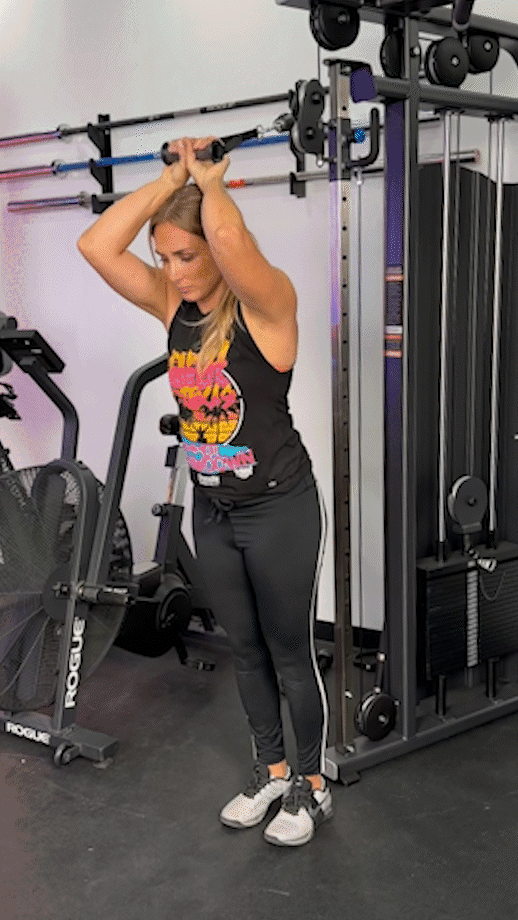
Cable Seated Twists
Why we like it: “The cable seated twist is essentially a weighted oblique twist,” says Amanda. “The movement improves posture and spinal mobility by opening up the hips.”
How to do it:
- Set the cable pulley to medium height, attach a stirrup handle, and place a flat bench in front of the machine. Grab the handle with both hands and sit straddling the bench.
- Fully extend your arms in front of you, then rotate your torso to one side until the cable touches your shoulder.
- Hold briefly, then slowly return to the starting position and rotate to the opposite side.
- Come back to center and repeat as needed.
RELATED: Oblique Workouts
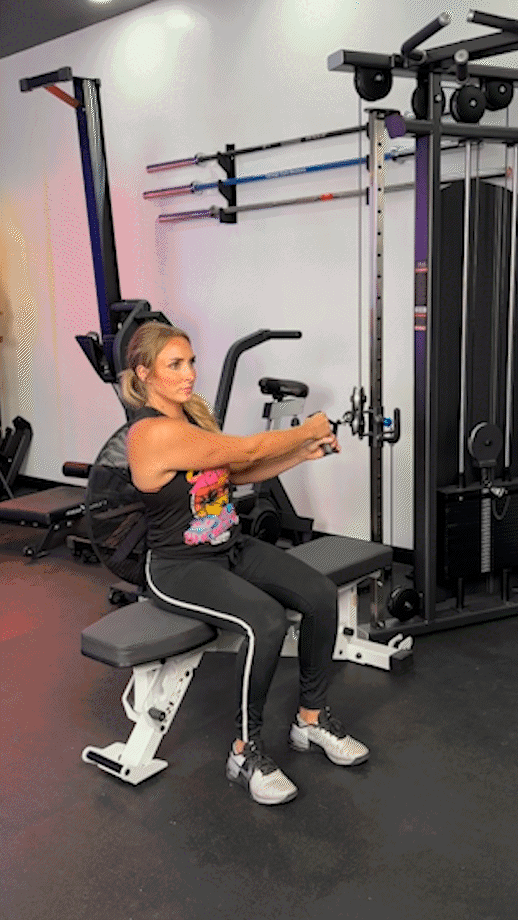
Standing Cable Twist
Why we like it: Like the standing cable crunch, performing the cable twist on your feet offers better carryover to other exercises, or everyday tasks that you will perform on your feet making it more functional than the seated version.
How to do it:
- Set the cable pulley to approximately hip height and attach a stirrup handle. Stand with the machine to your side and grab the attachment with both hands.
- Rotate away from the machine while bracing your core, then slowly return to center.
- Complete all desired reps, then switch sides and repeat the set.
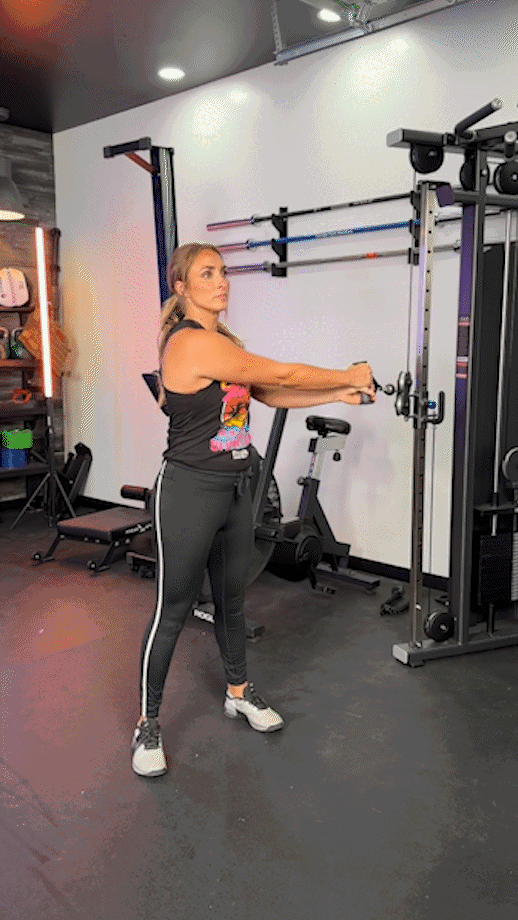
Cable Standing Side Bend
Why we like it: The dumbbell side bend is a great oblique exercise. The cable side bend is a variation of this movement, making it one of the best ab exercises for your obliques.
How to do it:
- Set the cable pulley to the lowest position and attach a single stirrup handle.
- Grab the handle with one hand, then step away from the machine to create tension. The machine should be directly to your side.
- Bend your torso toward the machine until you feel a stretch in the oblique muscle.
- Slowly return to the starting position and perform the desired number of repetitions.
- Finish your set, then switch sides and repeat on your other side.
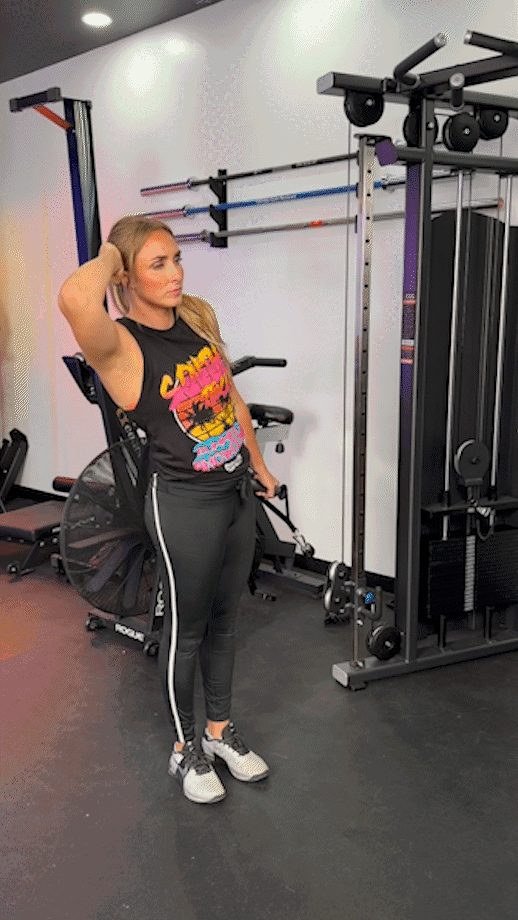
Cable Woodchopper (aka Cable Twist High-to-Low)
Why we like it: As the name suggests, the cable wood chop exercise is meant to simulate chopping wood because, let’s face it, it’s hard work! You’ll rope in various muscle groups, including the core muscles, for a full-body workout that can’t be beat!
“The high-to-low cable twist is a great all-around upper body builder,” says Amanda. “It’s especially great for building muscle in your lower abs and lower back.”
How to do it:
- Set the cable pulley to a high setting and fasten the single stirrup-grip attachment. Stand with the machine to your side and grab the handle with both hands over your shoulder.
- With your arms fully extended, pull the handle down and diagonally across the body until it passes your thigh on your opposite side.
- Hold briefly, then slowly return to the starting position and repeat.
- Complete the desired number of reps, then switch sides and repeat the set.
RELATED: Lower Ab Workouts
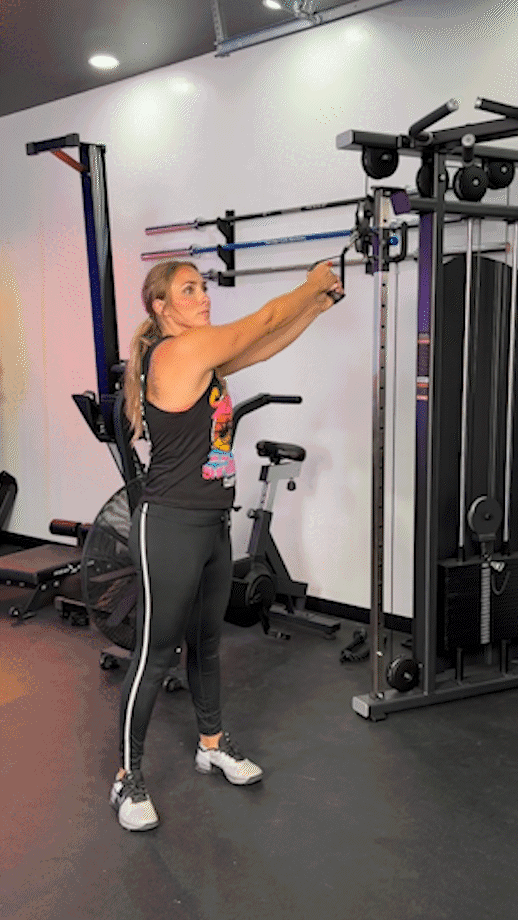
Cable Twist Low-to-High
Why we like it: The low-to-high cable twist is one of the best core exercises for your upper abs due to the angle at which the exercise is performed.
How to do it:
- Set the cable pulley to the lowest setting and attach a single stirrup handle. Grab the handle with both hands, with the machine at your side.
- Keeping your arms extended throughout the full range of motion, pull the handle up and across your body until it’s behind your head, as if you just swung a golf club.
- Slowly return to the starting position, complete the desired number of reps, then switch sides and repeat on the opposite side.
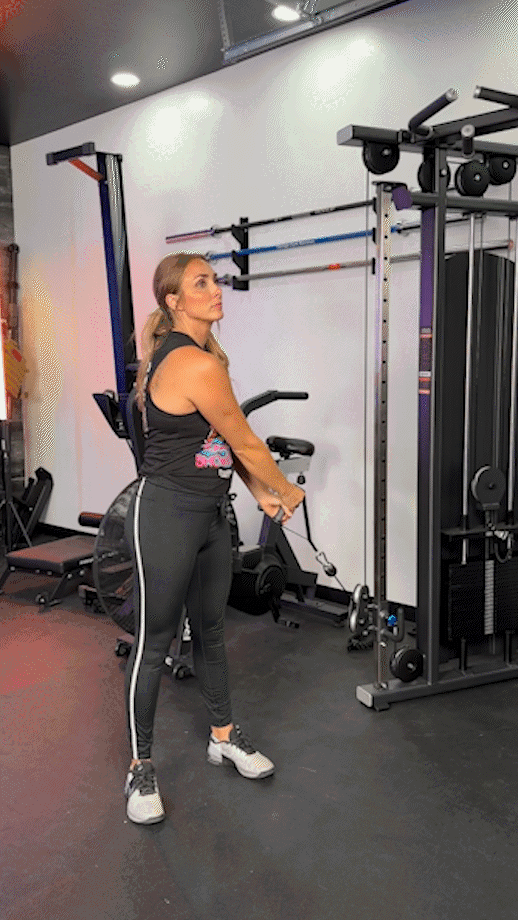
Cable Reverse Crunch
Why we like it: Just as your standard reverse crunch places special emphasis on the lower rectus abdominis, the cable reverse crunch does the same but with added resistance for a little more oomph.
How to do it:
- Set the cable pulley to the lowest setting and attach an ankle strap. Sit facing the machine and secure the attachment to your ankles.
- Lie back, lift your legs, and bend your knees to form 90-degree angles. Lay your arms flat on the floor next to you with your palms facing down.
- Lift your butt off the floor and pull your knees into your chest.
- Return to the starting position and repeat as needed.
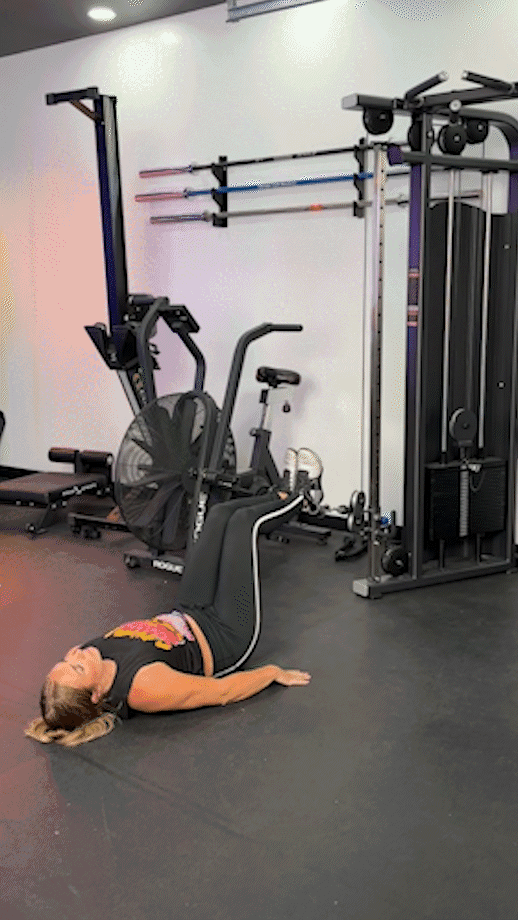
Cable Ab Workouts: Final Thoughts
Plenty of fit folks perform their abdominal exercises exclusively on their exercise mats, but the cable machine is an even better way of building core strength and stability.
The best cable exercises use similar movement patterns to bodyweight ab exercises, but the machine enables you to add resistance and progressively overload the muscles. Free weights also allow you to do this, but they can be cumbersome and restrict your range of motion.
So, the cable machine offers a superior method for combining resistance and core training. Give our cable ab workout a try during your next session!
Cable Ab Workouts: FAQs
Are Cable Machines Good For Abs?
Absolutely. Cable machines add resistance to bodyweight exercises, thus compounding the overall effect by increasing the workload performed during each rep.
Are cable ab workouts effective?
Cable ab workouts will work wonders for your core strength and stability, as will bodyweight exercises like leg raises and isometric exercises like front and side planks, but it won’t be enough to give you “abs” as in six-pack abs.
“For the beach bod you’ve been dreaming of, you need a workout routine that revolves around burning calories and fat as well as a strict diet that includes a balance of whole foods. Cable ab workouts certainly will help, but it’s not enough by itself,” says Amanda Capritto, a certified personal trainer (CPT), CrossFit and functional training specialist, and GGR Senior Staff Writer.
How To Do Ab Workout With A Cable Machine?
There are many movement patterns that target the abs, and by setting a cable machine to the appropriate height and using the correct cable or power rack attachments, you can add the cable machine into just about any ab workout.
Cable side bends, cable reverse crunches, cable Russian twists—the sky’s the limit!
References
1. Signorile JF, Rendos NK, Heredia Vargas HH, et al. Differences in Muscle Activation and Kinematics Between Cable-Based and Selectorized Weight Training. J Strength Cond Res. 2017;31(2):313-322. doi:10.1519/JSC.0000000000001493
2. Flynn W, Vickerton P. Anatomy, Abdomen and Pelvis: Abdominal Wall. [Updated 2022 Jul 25]. In: StatPearls [Internet]. Treasure Island (FL): StatPearls Publishing; 2023 Jan


